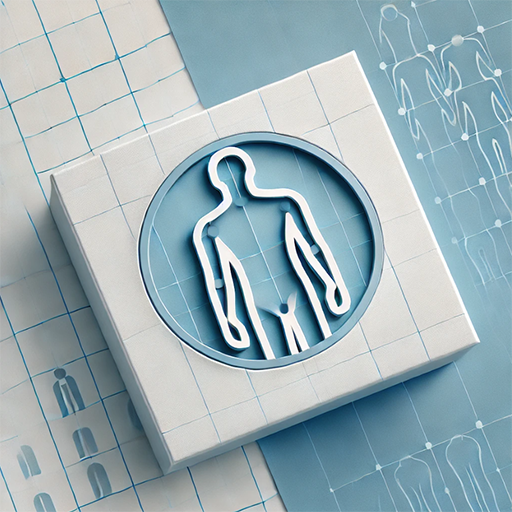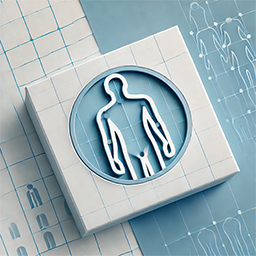Introduction: Why Weight Loss Matters
Weight loss is about more than just looks—it’s about feeling better, boosting your health, and living a longer life. Losing even a small amount of weight can help lower your risk of many health problems, like heart disease and diabetes. Whether you’re aiming to drop a few pounds or make a major lifestyle shift, this guide is here to help. We’ll cover simple, effective steps that you can start using today to reach your goals.
What Is Weight Loss?
Weight loss means lowering your total body weight. This happens when your body burns more calories than you eat or drink. You can do this by eating fewer calories, being more active, or a mix of both.
There are many ways to lose weight, but not all of them are safe. The best weight loss plans are simple, healthy, and built to last. They help you lose weight slowly and keep it off over time.

The Health Benefits of Losing Weight
Losing weight comes with many health benefits, such as:
- Lower risk of heart disease and stroke
- Better control of blood sugar levels
- Less pain in your joints
- More energy and better sleep
- Improved mood and self-esteem
Even a small amount of weight loss can make a big difference. According to the Centers for Disease Control and Prevention (CDC), losing just 5% to 10% of your body weight can lead to major health gains.
How to Start Your Weight Loss Journey
1. Set Realistic Goals
Start with small, clear goals. Try to lose 1 to 2 pounds each week. This pace is safe and proven to work best for long-term success. Setting realistic goals helps you stay motivated and avoid burnout.
2. Keep a Food Journal
Write down what you eat and drink each day. Keeping a food journal helps you stay aware of your habits. It can show you where you’re doing well and where you can make better choices. Even small changes, like cutting back on snacks or sugary drinks, can add up over time.
3. Plan Your Meals
Meal planning helps you stay on track and avoid last-minute junk food choices. When you plan ahead, it’s easier to make sure your meals are healthy and balanced. Try to include a mix of:
- Lean protein (like chicken, turkey, eggs, or tofu)
- Whole grains (like brown rice, oats, or quinoa)
- Fruits and vegetables (fresh, frozen, or canned with no added sugar)
- Healthy fats (like olive oil, avocados, or nuts)
Having a plan also saves time and makes grocery shopping easier.
Best Diet Tips for Losing Weight
Eat More Fiber
Fiber helps you feel full longer, which can make it easier to eat less and lose weight. It also supports good digestion and keeps your blood sugar steady. Add more fiber to your diet with foods like:
- Beans (such as black beans or lentils)
- Oats (especially old-fashioned or steel-cut)
- Berries (like raspberries, blueberries, and strawberries)
- Vegetables (especially leafy greens and broccoli)
- Whole grains (like brown rice, quinoa, and whole wheat bread)
Eating more fiber each day can make a big difference in your weight loss journey.
Drink More Water
Your body can mistake thirst for hunger, causing you to eat when you don’t need to. Drinking water before meals can help you feel full and prevent overeating. Aim for at least 8 glasses a day to stay hydrated and support your weight loss goals. Choosing water over sugary drinks also cuts extra calories.
Cut Back on Added Sugar
Added sugar gives you extra calories with little nutrition. It’s often hidden in everyday foods like:
- Sodas and sugary drinks
- Candy and baked goods
- Store-bought sauces and dressings
- Breakfast cereals and snack bars
Too much sugar can lead to weight gain and health problems. Try using natural sweeteners like honey or maple syrup in small amounts—or skip added sugar whenever you can. Reading labels can help you spot hidden sugars and make smarter choices.
Watch Your Portions
Portion sizes have gotten much larger over time, making it easy to eat more than you need. To help control your intake, try using smaller plates and bowls. This simple trick can make your portions look bigger and help you eat less. Always read food labels to understand serving sizes, and avoid eating straight from the package—it’s easy to overeat that way.

Exercise for Weight Loss
You don’t have to run marathons to lose weight—just focus on moving more than you did yesterday. Regular physical activity can help you burn calories, build muscle, and feel better overall.
Best Types of Exercise
- Walking: Perfect for beginners. Aim for 30 minutes a day, whether it’s a brisk walk around your neighborhood or on a treadmill.
- Strength Training: Helps build muscle, which burns fat even while you’re resting. Try bodyweight exercises like squats, lunges, and push-ups.
- Cardio Workouts: Activities like jogging, biking, swimming, or dancing get your heart rate up and burn calories.
According to Harvard Health, combining a healthy diet with regular exercise is the most effective way to lose weight and keep it off.
Lifestyle Habits That Support Weight Loss
Get Enough Sleep
Not getting enough sleep can mess with your hunger hormones, making you crave unhealthy foods. Aim for 7 to 9 hours of sleep each night to help regulate your appetite and improve your overall well-being.
Manage Stress
Stress can lead to emotional eating, which can make weight loss harder. To manage stress, try activities like yoga, meditation, or even a walk outside to clear your mind and relax. Finding ways to reduce stress can help you make healthier food choices.
Stay Consistent
Remember, weight loss isn’t about being perfect. Focus on creating positive daily habits that support your goals. Consistency over time is what leads to lasting success, not quick fixes or extreme changes.
What to Avoid When Trying to Lose Weight
Fad Diets
Fad diets may promise quick weight loss, but they often don’t deliver lasting results. Many of these diets cut out entire food groups or severely restrict calories, which can hurt your health and leave you feeling deprived.
Skipping Meals
While skipping meals might seem like an easy way to cut calories, it can actually backfire. Skipping meals can lead to overeating later in the day and slow down your metabolism, making it harder to lose weight.
Overeating “Healthy” Foods
Even though foods like nuts, avocados, and certain oils are healthy, they are also high in calories. Eating too much of these, even though they’re good for you, can still contribute to weight gain. Moderation is key, even with healthy foods.
Common Weight Loss Myths (And the Truth)
Myth: Carbs Make You Fat
Truth: Not all carbs are bad. Whole carbs like oats, fruits, and brown rice are healthy and provide essential nutrients. It’s processed carbs and sugary foods that are linked to weight gain and other health issues.
Myth: Fat Should Be Avoided
Truth: Healthy fats, like those found in olive oil, nuts, and avocado, are an important part of a balanced diet. These fats support your health and help you feel full, making it easier to manage your weight.
Myth: You Have to Be Hungry to Lose Weight
Truth: Losing weight doesn’t mean starving yourself. It’s about making smart food choices and eating the right balance of nutrients. By eating wholesome, satisfying foods, you can lose weight without feeling hungry all the time.
Sample One-Day Weight Loss Meal Plan
Breakfast
Start your day with a nutritious bowl of oatmeal topped with fresh berries and chia seeds. This combo gives you fiber, antioxidants, and healthy fats to keep you full and energized.
Lunch
Enjoy a grilled chicken salad with a light olive oil and lemon dressing. This meal provides lean protein and healthy fats, helping you stay satisfied until your next meal.
Snack
Have a tasty and filling snack of apple slices paired with peanut butter. The apples give you fiber, while the peanut butter adds protein and healthy fats.
Dinner
For dinner, enjoy baked salmon with a side of quinoa and steamed broccoli. The salmon offers omega-3 fatty acids, while quinoa and broccoli provide fiber and important vitamins.
Dessert (Optional)
Indulge in a small square of dark chocolate (over 70% cocoa) for a sweet treat that satisfies your cravings without overloading you with sugar.
Need More Ideas?
Looking for more healthy weight loss meal ideas? Check out the Mayo Clinic’s healthy weight recipes for delicious and balanced options.

How to Stay Motivated to Lose Weight
Set Short-Term Goals and Celebrate Small Wins
Break down your weight loss journey into smaller, achievable goals. Each time you reach one, take a moment to celebrate your success. Small victories can keep you motivated and excited to continue.
Track Your Progress with Photos or Measurements
Tracking your progress visually, whether with photos or by measuring your waist, can help you see the changes that might not show on the scale. This keeps you motivated and reminds you how far you’ve come.
Get Support from Friends, Family, or Online Groups
Having a support system can make a huge difference. Share your journey with friends, family, or online groups where you can encourage each other and share tips. The accountability and encouragement will help you stay on track.
Be Kind to Yourself—Progress, Not Perfection!
Remember, weight loss is a journey, not a race. Don’t be hard on yourself if things don’t go perfectly. Focus on your progress and celebrate how far you’ve come. Consistency is key, and every step forward counts.
Final Thoughts: You Can Do This!
Losing weight doesn’t have to feel overwhelming. With the right mindset and healthy habits, you can achieve your goals and feel great, all while still enjoying the foods you love. It’s not about striving for perfection—it’s about making consistent, positive choices every day.
Remember, weight loss is a journey. Take it one step at a time. Start small, move more, and focus on eating better. With patience and consistency, you’ll feel better and see the results you desire.
Start today. You’ve got this!
Let’s Talk!
Are you ready to begin your weight loss journey? What has been working well for you so far, and what challenges have you faced? Share your experiences and thoughts in the comments below. Let’s support and motivate each other on this path to better health and wellness!
Need a little extra help? Would you like a free printable meal planner or workout tracker to keep you on track? Just let me know, and I’ll send one right to you!



